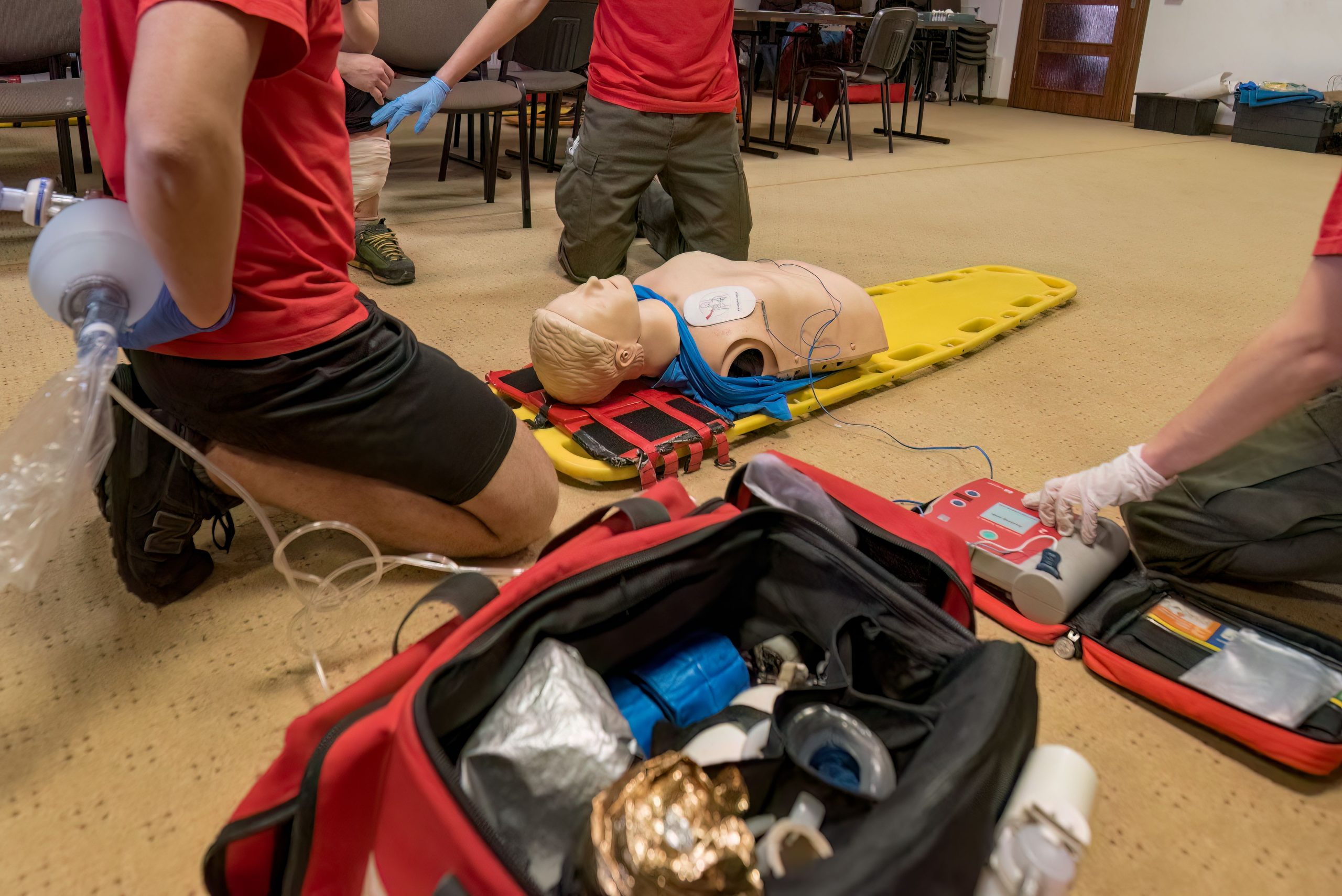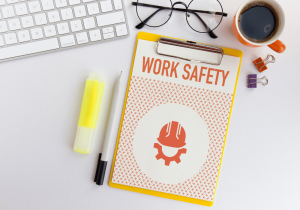
Menu
Close
Occupational first aid plays an essential role in safeguarding the health and well-being of employees in the workplace. It refers to the immediate medical assistance provided to individuals suffering from injuries or illnesses that occur in a work environment. For Canadian businesses, compliance with legal requirements surrounding first aid is non-negotiable. Under provincial occupational health and safety regulations, employers are required to abide by minimum first aid standards, including the availability of trained personnel, adequate supplies, and properly maintained facilities.
The need for occupational first aid goes beyond legal obligations. Having trained first aiders on-site ensures that employees receive immediate care when incidents occur, mitigating the severity of injuries while waiting for professional medical assistance. Furthermore, skilled first aid responders can save lives during critical emergencies, such as heart attacks or strokes. By integrating first aid preparedness into workplace operations, organizations not only demonstrate their commitment to employee welfare but also ensure a safer, more proactive culture where health and safety are prioritized.
 A comprehensive occupational first aid program is the backbone of workplace safety. At its core, the program should include three essential components. First, organizations must develop a well-structured first aid plan, defining protocols and procedures for identifying and handling injuries, illnesses, and emergencies. The plan should consider the nature of the workplace, its potential hazards, and the number of employees on-site. For example, higher-risk industries, like construction, require tailored protocols to address job-specific risks, while low-risk office environments may have simpler requirements.
A comprehensive occupational first aid program is the backbone of workplace safety. At its core, the program should include three essential components. First, organizations must develop a well-structured first aid plan, defining protocols and procedures for identifying and handling injuries, illnesses, and emergencies. The plan should consider the nature of the workplace, its potential hazards, and the number of employees on-site. For example, higher-risk industries, like construction, require tailored protocols to address job-specific risks, while low-risk office environments may have simpler requirements.
Second, sufficient first aid equipment and supplies are crucial. Employers must ensure that first aid kits are stocked with all necessary items, such as bandages, antiseptic wipes, adhesive tape, gloves, and scissors, as mandated by local regulations. Depending on workplace hazards, specialized equipment like Automated External Defibrillators (AEDs), burn care supplies, or eye wash stations may also be necessary. Regular checks of emergency equipment are vital to ensure its readiness in case of an incident.
Lastly, ongoing training and certification are indispensable elements of a successful program. Training ensures that designated first aiders are equipped with the skills and knowledge necessary to perform their duties confidently and competently. Certifications must remain current, as first aid practices and guidelines evolve regularly. Regular drills and refresher sessions should also be conducted to keep employees prepared for any situation, reducing response time during emergencies.
Work injuries can vary significantly depending on the nature of the work environment. Nonetheless, some forms of injury are relatively common, and having employees who are trained to respond immediately can minimize harm and improve outcomes. For instance, minor injuries, such as cuts, scrapes, and burns, occur frequently, requiring prompt cleaning and treatment to prevent infection or further damage. Similarly, sprains, strains, and other musculoskeletal injuries often result from repetitive tasks or improper handling of equipment, making injury response training especially valuable in physical workplaces.
Medical emergencies like heart attacks and strokes demand swift and precise action to save lives. Employees trained in recognizing the early signs of these emergencies can call for professional help while administering potentially life-saving first aid, such as positioning victims to enhance circulation or performing chest compressions. Comprehensive training programs also equip first aiders with knowledge about allergic reactions, seizures, diabetes complications, and other time-sensitive conditions, enabling them to deliver appropriate intervention immediately.
The steps for providing CPR and using Automated External Defibrillators (AEDs) are central to occupational first aid. Organizations should emphasize this training given its criticality in life-threatening cardiac events. By understanding the proper way to assess unresponsiveness, deliver chest compressions, and use AEDs effectively, employees not only improve the chance of survival but also reduce long-term complications for affected individuals.
Investing in occupational first aid training arms employees with the confidence needed to act decisively during emergencies. This empowerment stems from a combination of knowledge, practical skills, and the assurance that they can save lives and alleviate suffering in high-pressure scenarios. Importantly, first aid training bridges gaps in health and safety skills, enabling employees at all levels of an organization to make meaningful contributions to workplace preparedness.
The wider impact of first aid training extends to fostering a stronger culture of safety within an organization. By prioritizing health and safety as visible, integral components of operational policies, companies create an environment where everyone feels secure. Visibility of first aid training programs and emergency preparedness measures signals the company’s commitment to its workforce, promoting trust and accountability among employees.
Notably, workplaces that actively promote occupational first aid enjoy improved employee morale and productivity. Knowing that their safety is a priority enables employees to focus better on their tasks, reducing absenteeism and improving overall efficiency. When employees feel valued and supported, they are more likely to engage actively in creating a positive work environment, further contributing to the organizational safety culture.
Selecting the right training provider is a crucial step in building an effective occupational first aid program. Organizations should prioritize reputable providers with a proven track record in delivering high-quality training. Evaluate whether providers are certified by recognized bodies, such as the Red Cross or Canadian Heart and Stroke Foundation, as these certifications ensure adherence to national and international first aid standards. Certified instructors bring valuable expertise, offering real-world insights that enrich the training experience.
Curriculum approval is another vital consideration. Training provided should include comprehensive modules that address workplace-specific health and safety hazards. Look for providers that adapt their curriculum based on a company’s unique requirements, whether it involves hazardous materials, confined spaces, or customer-facing roles. The availability of flexible training options, including in-person, online, or hybrid formats, is also advantageous, as organizations can tailor programs to suit employee availability and regional guidelines.
First aid training is not a one-size-fits-all solution, and varying levels may be appropriate depending on an organization’s scope. Basic Standard First Aid (SFA) is often suitable for most environments, providing foundational skills. Advanced training levels, such as Occupational First Aid Level 3 (OFA Level 3), are geared toward industrial or high-risk workplaces where specialized care is necessary. Understanding these distinctions helps organizations select the training best suited to their operational needs.
 Occupational first aid is not static. Staying updated on the latest techniques, guidelines, and tools prevents complacency and ensures preparedness when emergencies arise. Certification renewal timelines typically range between two to three years, depending on the type of first aid training, and neglecting these requirements can lead to lapses in compliance. Recertification also serves as an opportunity to refresh skills and integrate new practices as they emerge.
Occupational first aid is not static. Staying updated on the latest techniques, guidelines, and tools prevents complacency and ensures preparedness when emergencies arise. Certification renewal timelines typically range between two to three years, depending on the type of first aid training, and neglecting these requirements can lead to lapses in compliance. Recertification also serves as an opportunity to refresh skills and integrate new practices as they emerge.
Continuous learning offers further ways to maintain competency in occupational first aid. Employers can foster knowledge retention through regular refresher courses, practical drills, and participation in workshops or conferences. Staying updated is particularly important in light of frequent advancements in medical technologies, such as AEDs with improved usability or upgraded surgical dressings. Employees should also be encouraged to engage with publications or online resources that frequently publish updates on first aid practices.
Many organizations find value in budgeting for skill development opportunities for their employees. Allocating resources toward exposure to industry best practices and scenario-based training builds confidence, ensuring that employees feel equipped to provide care without hesitation, even in fast-paced, high-stakes settings.
Investing in occupational first aid brings immeasurable benefits to businesses, offering peace of mind, legal compliance, and a commitment to employee well-being. By equipping team members with the knowledge, tools, and motivation to respond effectively during emergencies, organizations build a culture defined by safety, respect, and preparedness.
Are you ready to prioritize safety in your workplace? Explore our range of first aid training supplies and resources to get started today.